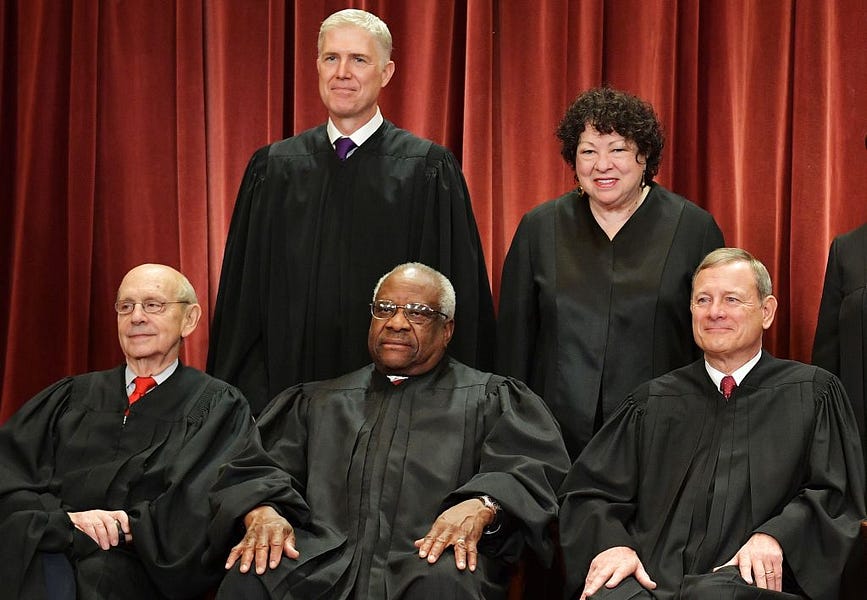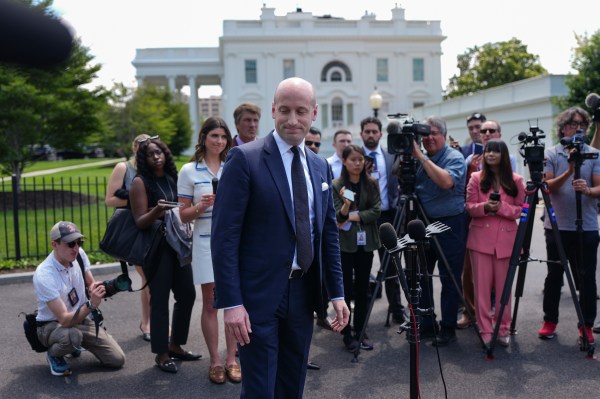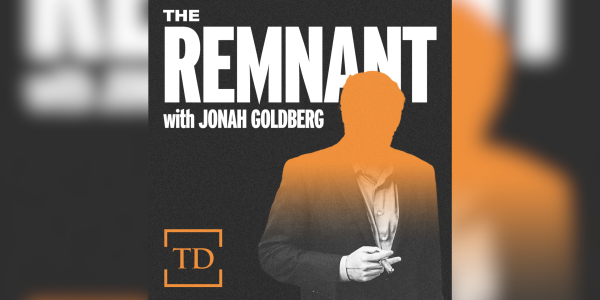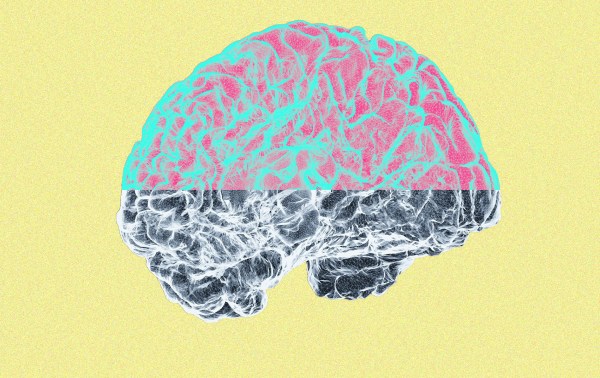Last week, NPR published a story headlined, “Gorsuch didn’t mask despite Sotomayor’s COVID worries, leading her to telework.” Nina Totenberg, undoubtedly the most well-known of all the Supreme Court reporters, reported from “court sources” that Chief Justice John Roberts had “in some form asked the other justices to mask up” because Justice Sonia Sotomayor “did not feel safe in close proximity to people who were unmasked” because of her diabetes. As Totenberg told it:
They all did. Except Gorsuch, who, as it happens, sits next to Sotomayor on the bench. His continued refusal since then has also meant that Sotomayor has not attended the justices’ weekly conference in person, joining instead by telephone.
This led to an outcry against Justice Neil Gorsuch—who has frequently spoken out on the importance of civility—for his callousness. After all, only a monster would refuse to wear a mask even if doing so jeopardized his colleague’s health and blocked her from the bench.
But then something very unusual happened.
On Wednesday morning, Justices Gorsuch and Sotomayor released a joint statement:
“Reporting that Justice Sotomayor asked Justice Gorsuch to wear a mask surprised us. It is false. While we may sometimes disagree about the law, we are warm colleagues and friends.”
Ah ha! But careful readers noted that the original story never said that Justice Sotomayor had asked Justice Gorsuch to do anything. This, they argued, proved only that the anonymous court sources were correct. A few hours later, however, the chief justice released his own statement:
“I did not request Justice Gorsuch or any other Justice to wear a mask on the bench.”
Still not definitive, said the story’s defenders, because NPR reported only that he asked “in some form.” And although most people initially read that strange phrasing to refer to the form of the request—a call or email—it was now meant to be interpreted that he simply raised the existence of masks in some other opaque manner without any direct request.
NPR issued its own statement later in the day simply stating that they stood by their original reporting.
Here is the problem: The reporting wasn’t just about what form the request came in or who from. The story was that Sotomayor was kept off the bench because of Gorsuch’s choice not to wear a mask and that he knew it. Even the headline included the causal connection.
In fact, the next paragraph in the story is how “Gorsuch, from the beginning of his tenure, has proved a prickly justice, not exactly beloved even by his conservative soulmates on the court” and continues with the story of how he tried to “dominate” his first oral argument.
Except the statements from the three justices pretty clearly contradict the narrative of her story regardless of what Roberts may have requested in “some form.”
First, even based on what the sources told NPR, it’s not at all clear which direction the causal arrow went, but the reporting presented only the far more sinister option. Yes, perhaps but for Gorsuch’s refusal to wear a mask, Sotomayor would be attending oral argument in person. But under the exact same set of facts it is just as possible that Sotomayor decided not to attend arguments in person and so Gorsuch decided he no longer needed to wear a mask.
It’s strange to assume the first without even explaining away the second. But it’s also a problem because that second option makes more sense.
For someone with a pre-existing condition, masking may be little comfort in a meeting that was going to last four hours—especially when the person is in the fortunate position of being able to telework, as many of her colleagues already had this term. It is also well known that Justices Gorsuch and Sotomayor actually are quite close outside the courtroom, as a Supreme Court reporter would well know—so it would be even stranger for Gorsuch to be so casually cruel to a friend.
And if the thesis is that Gorsuch’s decision not to wear a mask is another example of why he is not well-liked by his colleagues, that was also undermined. Justices rarely—very rarely-–put out statements responding to press stories. In truth, I can’t actually think of another example. So for both of the justices implicated in the story to come to Gorsuch’s defense was extraordinary when there was no expectation for them to say anything at all. The idea that they would take that step if a) any part of the story were true and b) if they deeply disliked Justice Gorsuch seems unlikely.
And this gets to a broader point about anonymous sources. There is a perverse incentive in Washington right now. Gossipy stories based on anonymous sources are often given more credibility. If a story reports that Neil Gorsuch eats his own boogers according to court sources, endless rounds of snickering will ensue. But if a story reports that two clerks who vehemently disagreed with his opinion in the vaccine mandate case say the justice eats his own boogers, far fewer people might believe the accusation and instead question whether these clerks had an ax to grind.
The problem should be obvious: Readers are more likely to engage with a story in which they aren’t invited to think too carefully about the motivations or credibility of the sources in question, sources have an incentive to stay anonymous rather than have their credibility questioned, and therefore, reporters have the unfortunate incentive to keep their sources anonymous because it counterintuitively lends credibility to their story.
So here are the facts as we know them today: A reporter has at least two sources—who don’t want readers to know who they are—who told her that the chief justice wanted the other justices to wear a mask to court. Gorsuch didn’t wear a mask to the argument on January 7 and he hasn’t worn one since. Sotomayor, whose seat is next to Gorsuch’s, didn’t attend the argument in person on January 7 and hasn’t attended since.
And then we’re left with a whole bunch of maybes: Maybe Gorsuch adamantly refused to wear a mask heedless of the consequences to his coworkers. Maybe Sotomayor was never planning to attend in person. Maybe Gorsuch and Sotomayor have had their own conversations that we aren’t privy to. Maybe the chief did ask everyone to wear a mask and he’s lying when he says otherwise. Maybe he didn’t and the sources have a particular beef with Gorsuch. Maybe maybe maybe.
What we do know is that news outlets do a disservice to their readers when they only offer them a single narrative. And that readers should be wary of any reporting that too neatly lays out who the good guys and the bad guys are. The world is rarely so neatly organized.







Please note that we at The Dispatch hold ourselves, our work, and our commenters to a higher standard than other places on the internet. We welcome comments that foster genuine debate or discussion—including comments critical of us or our work—but responses that include ad hominem attacks on fellow Dispatch members or are intended to stoke fear and anger may be moderated.
With your membership, you only have the ability to comment on The Morning Dispatch articles. Consider upgrading to join the conversation everywhere.